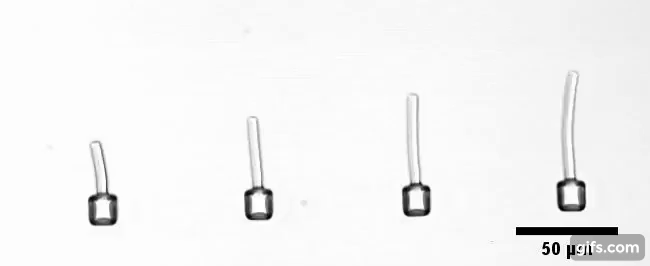New research published in Nature Communications describes how direct ink writing (DIW) can be used to create controllable 3D printed objects.
The method, termed “grayscale” or “gray-tone” lithography, has been investigated by a lead team at the Karlsruhe Institute of Technology (KIT) in Germany. In addition to heat, the objects produced with this technique can be controlled using a beam of light.
With real-world applications still relatively under-explored, the potential of these “active” objects, that move without the need for electronics or more traditional mechanisms, is virtually limitless. They offer new opportunity for experimentation in the fields of biology, biomedicine, and the general fabrication of micro machines (as used in car airbag systems.)

3D printed transformers
With the development of 3D printing, and its oft-hyped cousin 4D printing, scientists have been given new means of experimenting with motion: whether it’s self-assembling objects, or battery-free vehicles.
Rather than relying on external power, these often single-piece 3D printed objects are programmed to move by design. Typically, they require the application of heat or moisture to trigger movement.
One of the standout features of this new study conducted at KIT, is the variety of pre-programmed actions. Marc Hippler, first author of the study and PhD student at KIT, explains:
“We have developed the method to such an extent that we can also manufacture complex structures in which, as a result of external stimulation, the moving parts do not all react in the same way, but show different but precisely defined reaction.”
3D grey-tone lithography
In video clips posted alongside the paper, a series of microscopic levers are shown in transformation. In one example, the “handle” of four 3D printed levers curls as temperature is increased from 20 – 45°C (see above). In each sample the handle assumes a different, and more extreme, degree of transformation, with the final handle curling over entirely to make a circle.
In a second example, the same reaction, though this time faster and to a lesser degree, is achieved by shining a laser on the center of the lever (see below).

Each of these reactions is achieved by precisely programming the level of exposure each lever receives when 3D printing, e.g. the solid, more stationary parts of the object are cured more than the flexible, moving parts. This is what the team means by gray-tone” lithography. “This gray-tone lithography approach allows us to realize materials with substantially different properties in one fabrication step from a single photoresist formulation,” state the study authors.
“As usual, the notion gray-tone lithography refers to gradually changing the material properties by continuously varying the exposure dose during the process.”
3D Matter Made to Order
This 3D printed transformer project was conducted within the 3D Matter Made to Order cluster of excellence – a collaboration between KIT and Heidelberg University.
The vision for the method is that it could be used in microfluidics, and lab-on-a-chip fabrication. Professor Martin Bastmeyer from KIT’s Zoological Institute and Institute of Functional Interfaces who worked on the project, adds, “[…] for many applications, particularly in biology and biomedicine, it would be desirable not only to produce rigid structures but also active systems that are still movable after the printing process, e.g., that can change their shapes by an external signal.”
The full paper discussing this method named “Controlling the shape of 3D microstructures by temperature and light” is available to read with open access. It is co-authored by Marc Hippler, Eva Blasco, Jingyuan Qu, Motomu Tanaka, Christopher Barner-Kowollik, Martin Wegener and Martin Bastmeyer.
Is this your Research Team of the Year? Nominate 3D Matter Made to Order, or another piece of research, for the 2019 3D Printing Industry Awards.
For more 3D printing research updates subscribe to the 3D Printing Industry newsletter, like us on Facebook and follow us on Twitter. Consider 3D Printing Jobs for your next research opportunity.
Featured image shows a 3D printed loop transforms on response to temperature change. Clip via Nature Communications.



